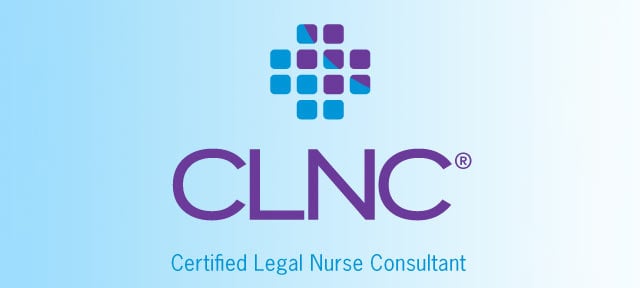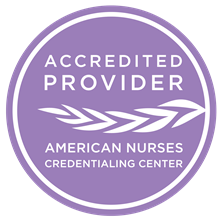Making a list,
Checking it twice,
Don’t want to kill a patient,
That wouldn’t be nice…
According to Dr. Atul Gawande, the average patient in an ICU requires “a hundred and seventy-eight individual actions per day, ranging from administering a drug to suctioning the lungs, and every one of them poses risks. Substantial parts of what hospitals do – most notably, intensive care – are now too complex for clinicians to carry them out reliably from memory alone. ICU life support has become too much medicine for one person to fly. Any of us who’ve worked in the ICU shouldn’t be surprised by Dr. Gawande’s assertations. But what to do about it?
Here at LegalNurse.com we use checklists for everything. There’s not a major project, including the National Alliance of Certified Legal Nurse Consultants (NACLNC®) Annual Conference (801 action items) that doesn’t have a major checklist. We find it not only keeps us from reinventing the wheel each time we start a new project (saving us time and money) but it also ensures that no moving parts are missed when we put something together. We even joke that we have checklists to make sure we have all our checklists!
Think about your life – you probably send your hubby to the grocery with a checklist. (Car keys – check. Checkbook – check. Grocery list – check). You (at least I do) pack for a trip with a checklist. (Bathing suit – check. Sunscreen – check. Mirrored shades to check out the hunky lifeguards – check). Checklists are part of everything I do and probably a large part of what you do on a daily basis also. Tom even has a checklist to make sure that he’s included all the proper clauses in the contracts that he writes (yawn).
How about using checklists to ensure safety instead of making sure you’ve got the loaf of bread, pound of pastrami and jar of mayo? This really isn’t a new idea. Since 1935 pilots have been using checklists to cover just about every aspect of flying an airplane, starting with the pre-flight inspection, taxiing, take off and landing. (Wings on – check. Wheels down – check. Dinner reservations at destination – check). Millions of passengers are delivered safely to their destinations each day thanks to simple checklists.
Now ask yourself as a Certified Legal Nurse Consultant, “how many patients are harmed because doctors (and maybe even nurses) don’t use checklists when doing complex medical procedures or simply treating patients?” The answer is, too many. Consistent protocols for patient care have been advocated by physicians since 1600 B.C. (Linen robe on – check. Snake-headed staff in hand – check. Leeches on patient – check.), but it wasn’t until 2003 that Dr. Peter Pronovost came up with a simple checklist to help reduce line infections in the ICU. That list was so successful that line infections in his hospital were reduced to almost 0%. Buoyed by this success he created other checklists which eventually were adopted by the state of Michigan for use in its ICUs. The results from implementation of those lists were so successful that Dr. Pronovost ended up publishing them in The New England Journal of Medicine in 2006.
In the almost three years since that study, not much else has happened with checklists. Apparently simple common sense just isn’t exciting enough for cutting-edge healthcare providers. You’d think that the medical and nursing professions would have expanded the use of checklists, but this hasn’t happened on a wide scale other than when you check-in at the hospital. (Insurance card – check. Ability to pay – check.)
That might be about to change though. The New England Journal of Medicine recently published the results of a study that involved using a simple, 19-item surgical checklist. The results were stunning: mortality rates in surgical patients were reduced by almost 50% and the same reduction was mirrored in nonlethal complications. With these sorts of results I hope that we’ll see a profusion of checklists in healthcare. The cost savings alone should get the attention of somebody. Perhaps checklists might be a simple way to reform healthcare. (Patient on table – check. Correct patient on table – check. Anesthesiologist sober – check.)
We know here at the Institute that a simple printed list can make a big difference, in time and money. Now healthcare providers are learning that checklists can save lives too. It’s time for healthcare to catch up with grocery shoppers. Next time you work up a case, have your attorney-client ask the healthcare providers for any checklists used in treatment of the patient. They should also ask each provider during deposition, how they ensure that they take each and every one of the proper steps in treating that patient. With such a line of questioning I can guarantee the jury will wonder why, in a world where a pilot won’t land an aircraft based solely on “memory,” a healthcare provider would do a risky procedure (e.g. brain surgery) on memory alone.
When you are consulting with attorneys on medical-malpractice cases helping to prepare interrogatories, requests for production and deposition questions be sure to ask about the use of relevant checklists in the healthcare setting.
Success Is Inside!
P.S. Comment and share checklists used in your healthcare facility.









I heartily agree about checklists. In healthcare they are a must to prevent adverse events. I support this across the continuum of care…not just hospitals. Prevention is the key and checklists are a tool that supports this which promotes patient safety. Thank you for this article.
This blog has comes at a time when I am currently working on a case where checklists would be used (e.g. patient falls). Thanks for jogging my memory as I continue to develop this case for my attorney-client!!!
The hospital where I last worked as an OR nurse was very big on checklists. There was one for the floor nurse to check before the patient was allowed to leave the floor to come to the OR, there was one for the pre-care nurses to follow when the patient was arriving the day of surgery (those pre-care nurses were the BEST at following the list to the letter and making sure everything they had to do was in order for that patient) and we had one we used that included the actions needed to get the Pt to the OR and up to incision.
When everyone took the checklist seriously, actually performing the actions required it was wonderful. I believe using them has made the patients safer and reduced all kinds of errors that can occur in the OR setting. However sometimes items would be checked off as having been done and they were not (i.e.: remove pt.’s teeth, underwear, etc.). Which I know sounds silly but hospitals spend lots of $$ to replace dentures and glasses that get lost in the transport from the OR to PACU and then back to the pt room.
I think after checking off items on the same list day after day the nurses would just breeze through the list and not really read every item EACH AND EVERY TIME.
One suggestion to reduce the “I know what is on the list” attitude and get everyone to read the list was to change the color paper and the order of the items periodically. Then you do actually have to read the list every time.
The case screening form you showed us in the CLNC® Certification Program is a wonderful example of the type of checklist to use when screening a case.
I agree about using checklists, it reduces error. I’ve been to hospitals that use a protocol checklist on their unit. Working as an agency RN having that concept reduces error for all. Although, I must say…floor RNs are getting preoccupied with checklists and documentation that it distracts them from patient care. The patient to RN ratio needs to be reduced. Otherwise, mistakes will continue to happen.
A daily checklist on all patients is an effective way to ensure all treatments and other services are completed in a timely manner. Checklists start with the charge nurse that reviews the patients’ care. It’s necessary to document all of the tasks that need to be implemented and the number of patients for the next shift. Lists should be provided to the other RNs, LPNs, CNAs and the unit secretary. Take notes during the change of shift report. Keep open lines of communication regarding new orders from physicians. The nursing team should all be on the same page to ensure that patients receive adequate care and there are no breaks in it. Otherwise an omission could occur or a patient might be injured.